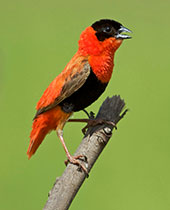But first: Why would anyone go to The Gambia? Simply put, The Gambia is an excellent place for an immersion in Tropical African bird life. Over 500 bird species have been recorded here over the years. While no one would be able to see quite this many during a typical visit, one would expect to see many. What sets The Gambia apart is that it’s possible to explore the country in a relatively casual way, with walks in the countryside, both on-trail and off, and a chance for what one might call “investigative spontaneity”.
Thus I had reasonably high expectations. I had done my homework and determined that I should be able to see 250 bird species during my time. With two cameras, I also hoped to take some photos to be happy with. I would not be disappointed. What follows are some vignettes from my time there.
One thing I enjoyed from the outset and as I travelled towards the Upper Country was the chance to walk through cultivated areas with a great degree of freedom. Not only does this appeal to my fairly active nature, but the open habitats are very attractive to many birds and allow one to ‘intercept’ birds flying from one spot to another. They can also be a hodgepodge of different crops that give insight into the local culture.
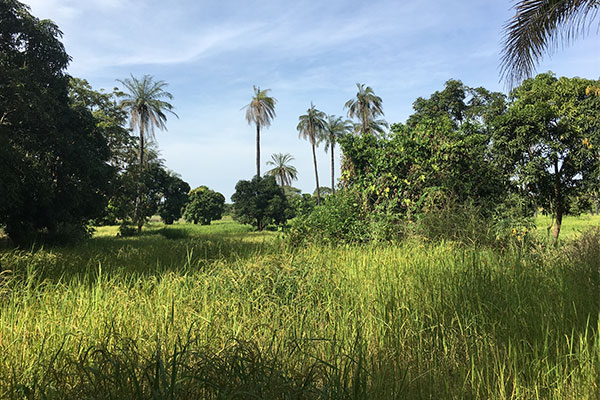
An idyllic landscape of rice, African Oil Palm and mango trees affords good visibility
As a family of birds, the rollers are a particularly conspicuous element of such environments. The frequency with which we see them assures one can eventually get a decent photograph.
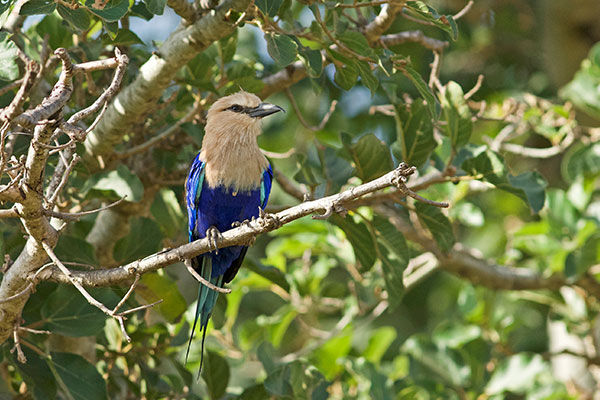
The Blue-bellied Roller is a conspicuous and photogenic bird of open country
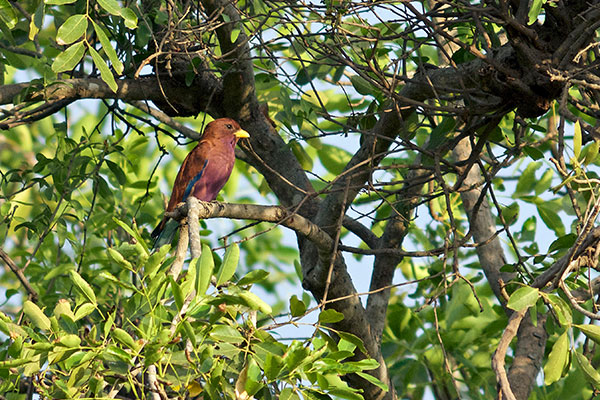
The Broad-billed Roller is another common and gorgeous member of this family
Another conspicuous group often seen in such areas consists of the glossy starlings, a group of several starling species with eye-catching plumage.
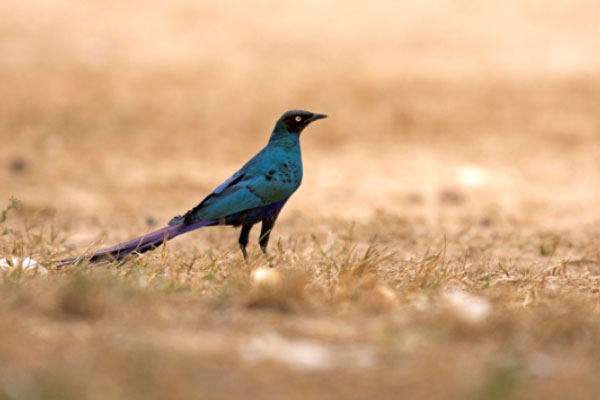
The Long-tailed Glossy Starling is a gorgeous common resident, noisy and boisterous
As rice is an important crop in the Gambia, the bounty assures food to many seed-eating birds. The Red-cheeked Cordon-bleu is one of several very attractive finches one can find foraging on leftover rice.
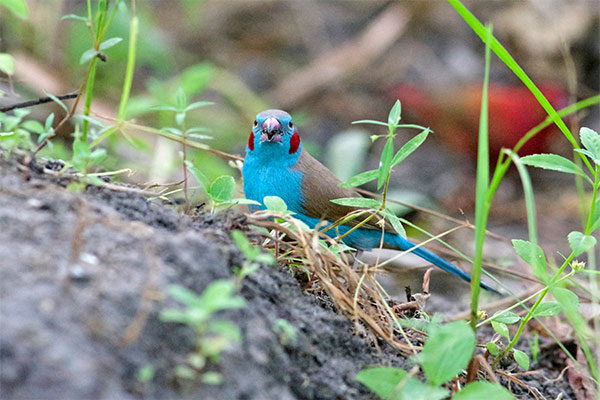
Another group of seed-eaters are the bishops. Male are exceptionally showy in their breeding plumage!
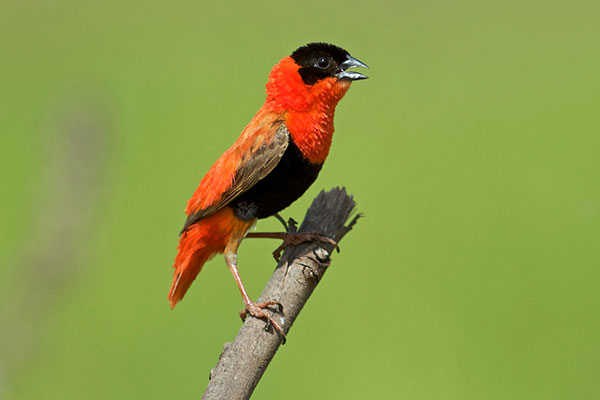
I also appreciated the chance to observe the distinctive agricultural practices during my wanderings. Areas near the River Gambia are subject to high water due to tides and a high water table, and Gambians have fashioned means to coexist. In this instance, these raised earthen beds had been recently planted with sweet potatoes, which remain high and dry.
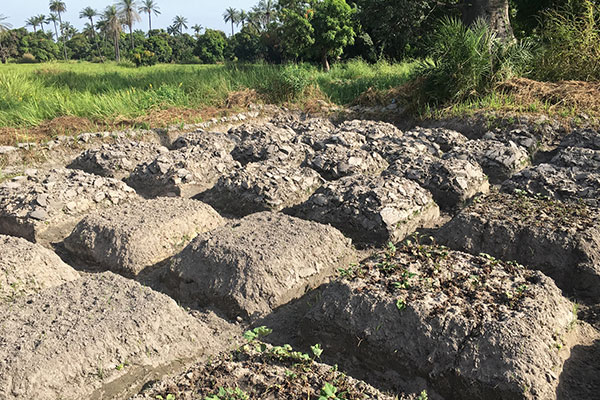
One crop that is particularly important in this country is the peanut, called the groundnut in Africa. November is harvest times, and the plants are unearthed and left to dry where they lay; farmers later return to collect the nuts. In the meantime, the fields are good places to wander for some special inhabitants. One I hoped to see in the Mid Country was the Abyssinian Ground-Hornbill. One of the the two largest hornbill species, they are considered by some to be grotesque looking but they are impressive. During this season of the peanut harvest, the Abyssinian Ground-Hornbill searches for prey hiding under piles of pulled peanut plants that are left to dry while awaiting processing.
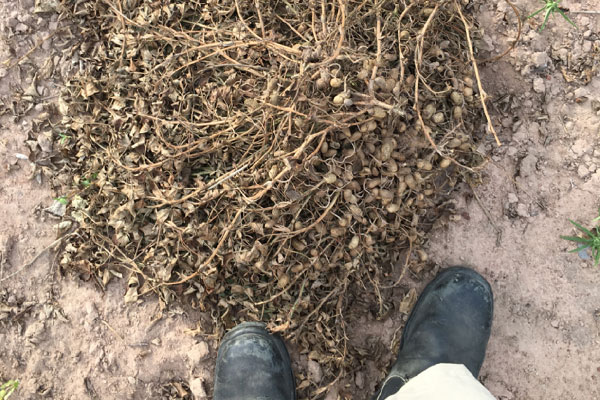
Even while one makes a concerted effort to see the hornbill, given as they wander far and wide, chance plays an important part in intercepting one. We happened to be walking in an adjacent fallow field when these cows and their herder passed around us (incidentally, I was surprised at how tiny these cattle are).
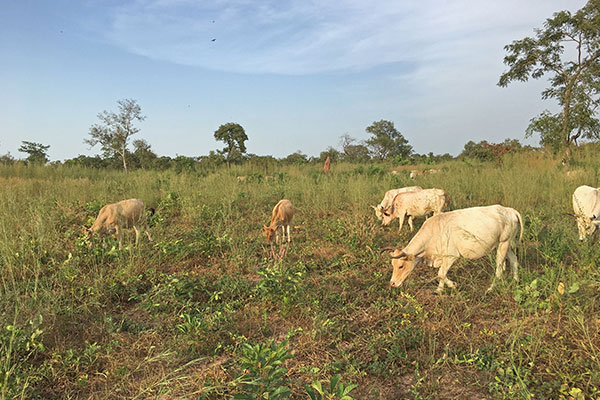
The cows walked about me. As they wandered through the field grazing, they approached the termite mound, and unwittingly disturbed a large flying something that was hidden in the vegetation below. That something was a female Abyssinian Ground-Hornbill! I could not ask for more as she flew up onto the pinnacle of the termite mound and posed!

A drying peanut (groundnut) plant. Note the multitude of peanuts attached at right.
Even while one makes a concerted effort to see the hornbill, given as they wander far and wide, chance plays an important part in intercepting one. We happened to be walking in an adjacent fallow field when these cows and their herder passed around us (incidentally, I was surprised at how tiny these cattle are).

Note the tall sand-coloured object in the background; that’s a huge termite mound
The cows walked about me. As they wandered through the field grazing, they approached the termite mound, and unwittingly disturbed a large flying something that was hidden in the vegetation below. That something was a female Abyssinian Ground-Hornbill! I could not ask for more as she flew up onto the pinnacle of the termite mound and posed!
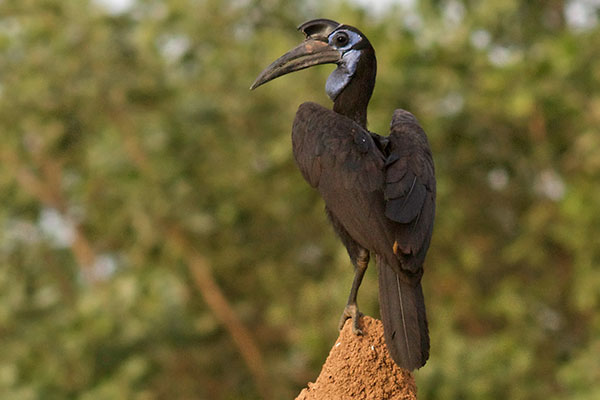
Another element I was eager to discover was the varied river environment through a couple of different excursions. On my first boat excursion in the Mid Country, I crossed the River Gambia and ascended one of its tributaries. In this region, the riverbanks are dominated by mangroves. I really found this enjoyable because of the great open views, and there was literally something interesting in every bend! Some inhabitants can remain very well hidden, whereas others such as the African Darter are conspicuous and ubiquitous.
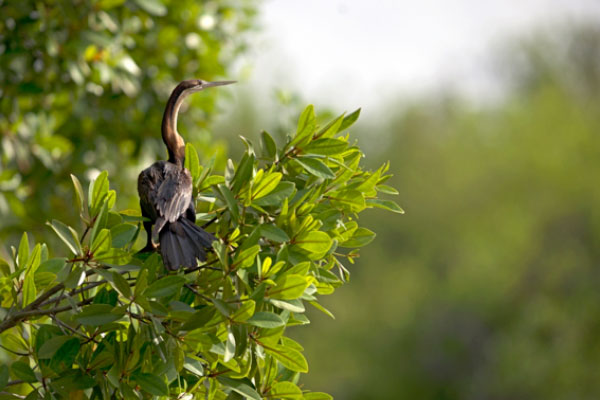
African Darters are fish-eaters found in good numbers in the mangroves
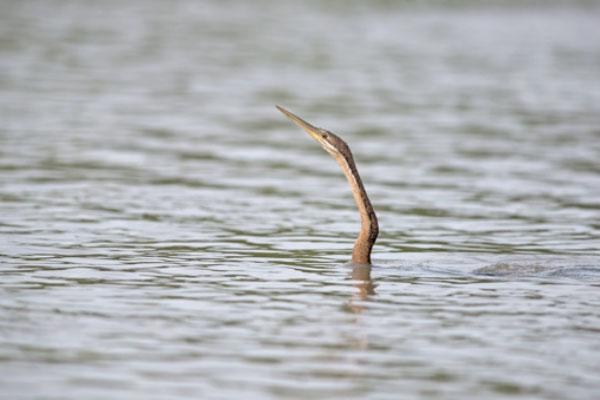
The African Darter can swim with but the neck and head exposed
Among other waterbirds I had a chance to see one of The Gambia’s two pelican species, the Pink-backed Pelican which, oddly perhaps, nests in trees!
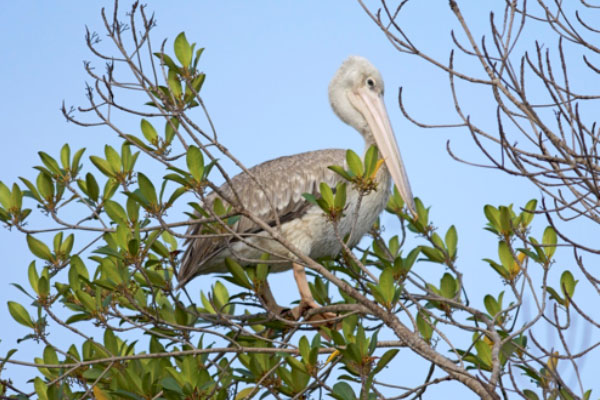
The Pink-backed Pelican is often seen perching in trees
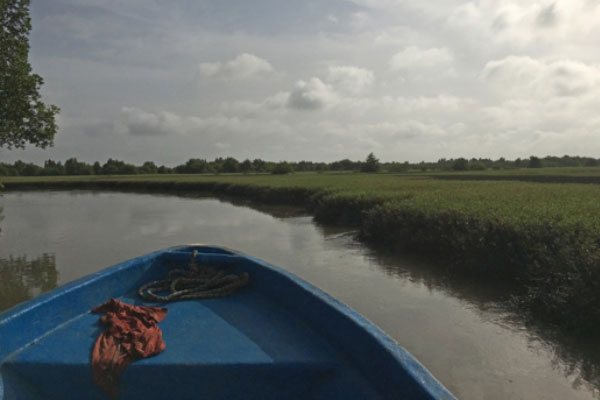
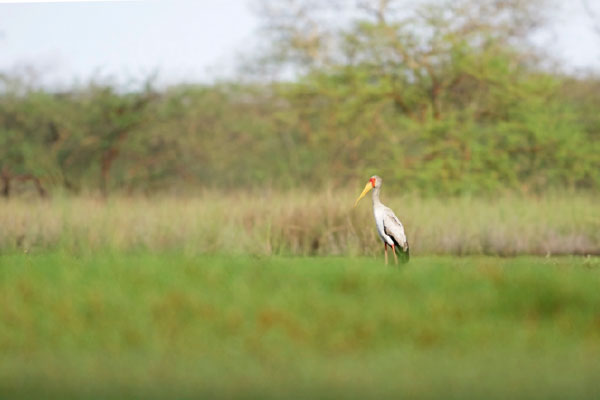
The Yellow-billed Stork is one of many wading birds found in the meadows
Exposed mudflats at lower tide also reveal some other interesting inhabitants such as mudskippers, fish that seem to locomote with little difficulty out of water provide that they remain wet. I was impressed by their luminous eyes.
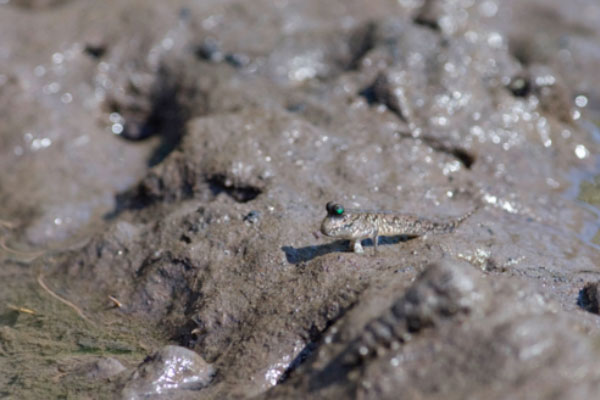
Can you see the mudskipper in this photograph?
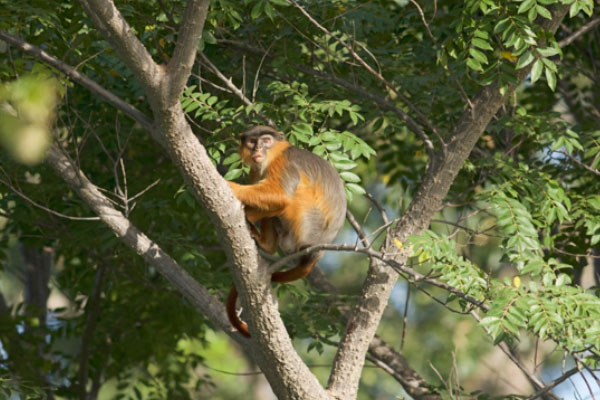 A Red Colobus monkey watches from its lofty riverside perch
A Red Colobus monkey watches from its lofty riverside perch
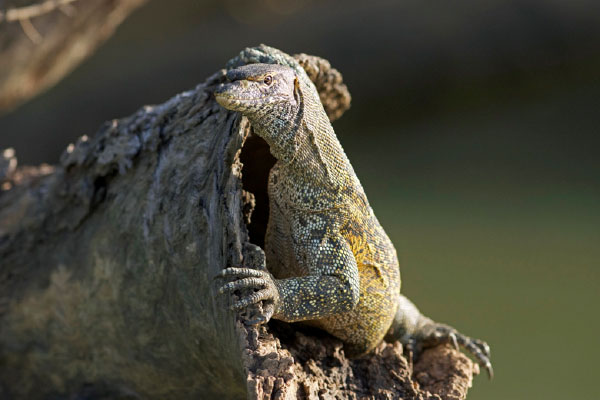
A Nile Monitor suns itself on a tree trunk overhanging the River Gambia. Would the name "Gambia Monitor" perhaps be more appropriate? 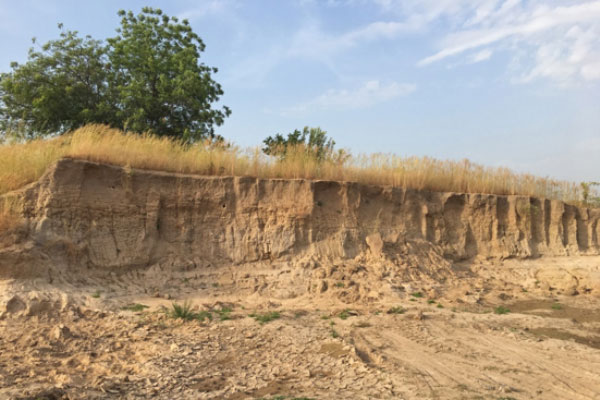 A sand quarry containing Red-throated Bee-eater nesting cavities
A sand quarry containing Red-throated Bee-eater nesting cavities
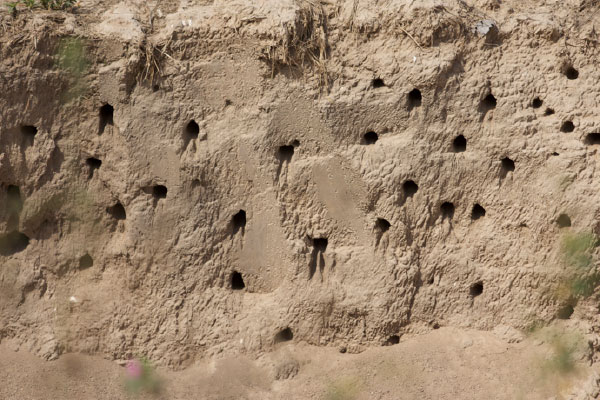 A closer look reveals multiple nesting cavities
A closer look reveals multiple nesting cavities
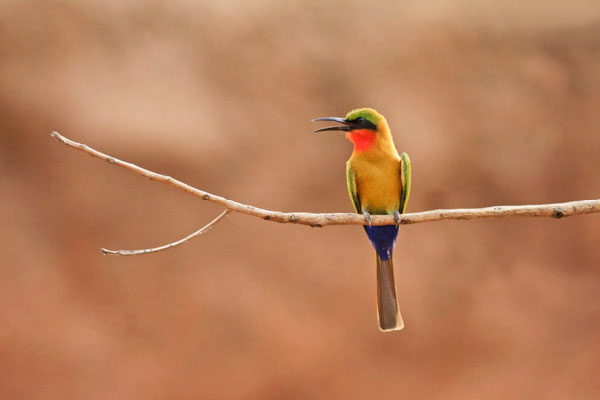 Red-throated Bee-eater
Red-throated Bee-eater
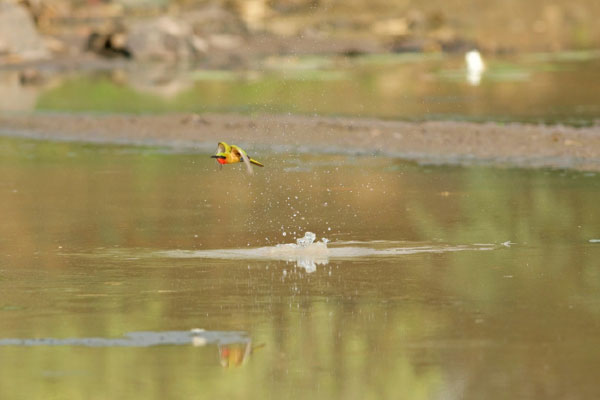 Often they plunge at the water’s surface as though picking off prey
Often they plunge at the water’s surface as though picking off prey
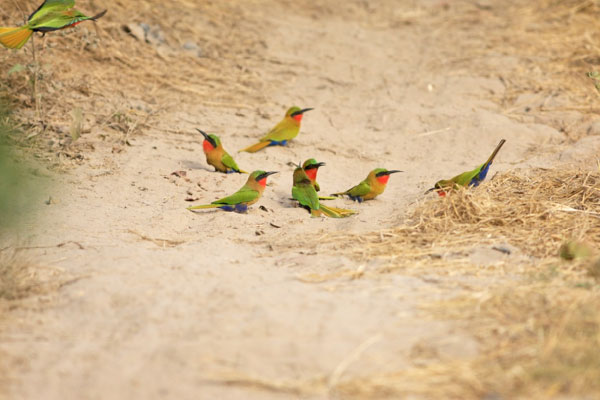
Ultimately I was able to see all 8 bee-eater species in The Gambia and to get decent photographs of several!
Another specialty of the middle and upper reaches is the Egyptian Plover. This striking shorebird breeds in the far upriver region, but descends for a time to the middle reaches where is can be observed in good numbers. Legend says that this bird acts as a dentist, plucking out food morsels wedged in the gums of crocodiles, whence the nickname ‘crocodile bird’. We were fortunate to encounter several of these beauties. They are timid but settle down if they don’t feel threatened.
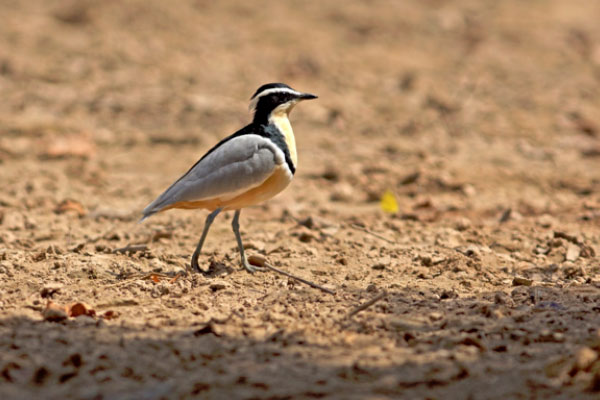
The environment would be quite different farther upriver at the edge of Upper Country. In this region, the river is lined not with mangroves but with glades of beautiful hardwoods such as mahogany mixed with various palms.
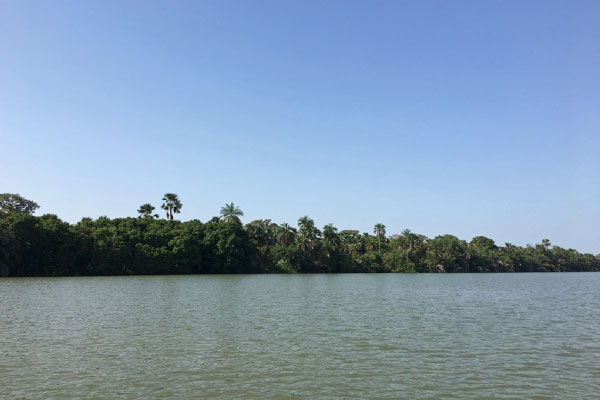
Cruising along the riverbank here gives us a chance for close views of many photogenic birds. Notable among these are several of the kingfishers.
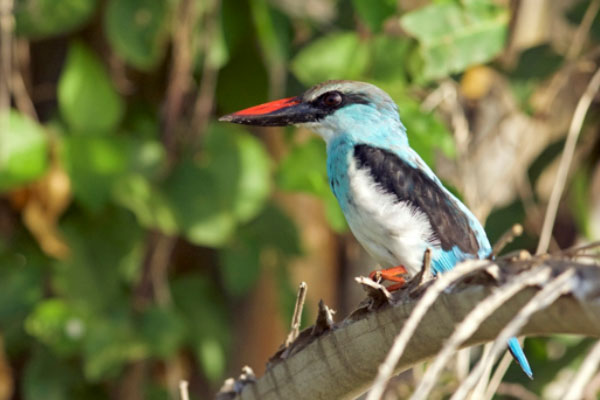
The higher stretches of the River Gambia also offer the best chances to see some water-associated birds such as the African Fish-Eagle. Though it would not be surprising that this bird eats fish, given its name, I imagined based on seeing its formidable talons here that it must be particularly well-adapted to the task!
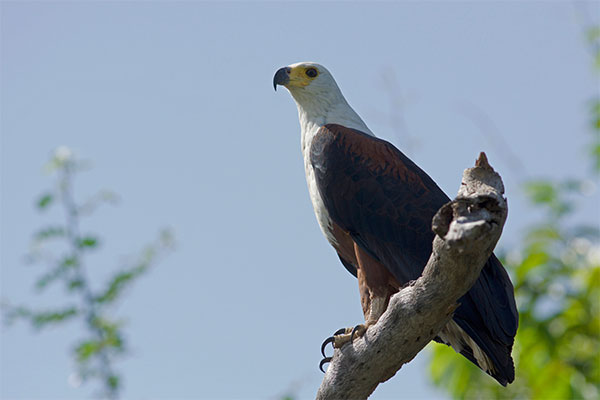
Sometimes there are surprises!

The River Gambia scene near the village of Janjanburreh
Cruising along the riverbank here gives us a chance for close views of many photogenic birds. Notable among these are several of the kingfishers.

The Blue-necked Kingfisher is a lovely riverside inhabitant
The higher stretches of the River Gambia also offer the best chances to see some water-associated birds such as the African Fish-Eagle. Though it would not be surprising that this bird eats fish, given its name, I imagined based on seeing its formidable talons here that it must be particularly well-adapted to the task!

An African Fish-Eagle perched on a riverside snag
Sometimes there are surprises!


A Nile Monitor suns itself on a tree trunk overhanging the River Gambia. Would the name "Gambia Monitor" perhaps be more appropriate?
The Gambia is notable for hosting multiple bird families with several striking members. I’ve already mentioned the rollers and kingfishers above, but there are also the bee-eaters and the sunbirds too. Some are widespread and some more localized in the Upper Country. I went to two Upper Country quarries in search of the Red-throated Bee-eater, which nests in colonies in such places (each pair excavates a tunnel in a vertical quarry wall). At first glance the quarry looks vacant and the nesting cavities imperceptible:


Within a short time the birds become apparent by their striking plumage.



These Red-throated Bee-eaters descended onto my path to dust-bathe together
Ultimately I was able to see all 8 bee-eater species in The Gambia and to get decent photographs of several!
Another specialty of the middle and upper reaches is the Egyptian Plover. This striking shorebird breeds in the far upriver region, but descends for a time to the middle reaches where is can be observed in good numbers. Legend says that this bird acts as a dentist, plucking out food morsels wedged in the gums of crocodiles, whence the nickname ‘crocodile bird’. We were fortunate to encounter several of these beauties. They are timid but settle down if they don’t feel threatened.

The Egyptian Plover is a most photogenic bird
What about the food in the Gambia? I really enjoyed the tasty selections. One thing I especially enjoyed was trying different forms of domoda, which is a dish, typically chicken, beef or fish, made with a special tomato and peanut sauce. The local rice is also excellent and the combination of these two made for great tasting meals. It would not be too much to say that I did a “domoda-tasting tour”. It’s simply delicious.
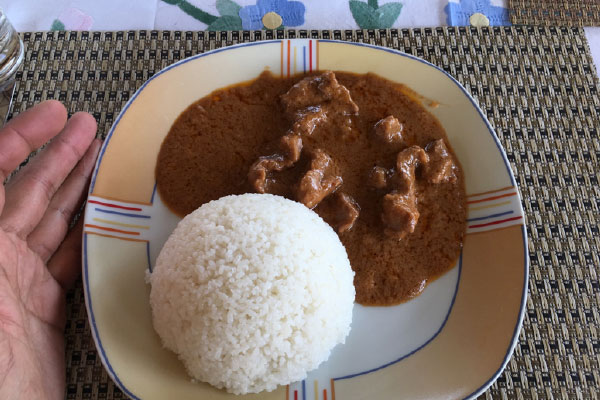

Domoda (chicken, as I recall) with rice, a typical Gambian meal
I could say much more about The Gambia but I will sum it up here. I enjoyed the fact that the country is small and distances are not so great. The country is homogeneous in many respects, yet varied. Our ability to explore at leisure meant I had multiple opportunities to observe the more common bird life, allowing me to actually learn the more common birds, rather than simply getting one-time fleeting glimpses of everything. It’s especially for this reason that I’d assert this makes for an excellent introduction to Africa. As well, the localized distribution of other birds, in relation to habitat and region made the exploration all the more interesting as it spoke to differences in precipitation and ecology that can be found even within a small country.
I always felt safe and sound, and felt like I was in an adventure. In the end I managed to see 254 bird species...very close to my predicted 250. I’ve planned our 2018 tour based on these experiences. The trip sold out. I hope you'll consider joining us on the next opportunity in November 2020; click here to view the tour and to request a detailed itinerary.
I always felt safe and sound, and felt like I was in an adventure. In the end I managed to see 254 bird species...very close to my predicted 250. I’ve planned our 2018 tour based on these experiences. The trip sold out. I hope you'll consider joining us on the next opportunity in November 2020; click here to view the tour and to request a detailed itinerary.


